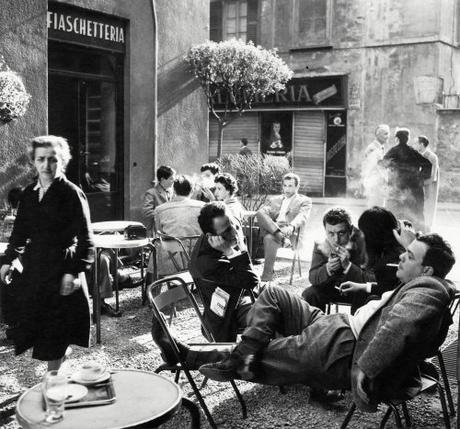
On the morning of June 14th, 1940, Parisians woke up to the sound of a German-inflected voice telling them, in French, that they were not to leave their buildings. The German Army was invading Paris, first entering from the Porte de La Villette and making their way towards the city’s center by way of Rue de Flandres. Soon, German soldiers took over the main intersections, while tanks rumbled down Champs Elysees. By the time of the invasion, nearly two million Parisians had already fled for the countryside and south of France. But among those still trapped in the capital, millions more despaired as they watched a giant swastika flag being hoisted underneath the Arc de Triomphe. That evening, the German Army imposed a curfew from nine in the evening until five in the morning. At night, the city went dark. This was the beginning of life in occupied Paris.
The occupying Germans had big plans for French industry. For generations up to this point, Savile Row had been the center of men’s tailoring, while Paris was the heart of haute couture. It’s said that a single dress from a leading French courtier at this time was the equivalent of “ten tons of coal,” while a liter of fine French perfume was worth “ten tons of petrol.” Germany, however, wanted to relocate French haute couture to the cities of Berlin and Vienna. To achieve this, they set up administrative offices back home, introduced subsidies for German manufacturers, and demanded that leading French fashion figures move to Berlin, where they were to help establish dressmaking schools.
Fashion isn’t just crucial to the French economy; it’s central to the French identity. So many in the trade protested. Lucian Lelong, president of French couture’s governing body, Chambre Syndicale de la Couture Parisienne, defiantly declared that “couture is in Paris or it is nowhere.” And even as the German government imposed humiliating rationing standards — transforming the French economy to serve Germany needs, first by shipping away food, then clothing, and finally coal — many Parisians found ways to boost their morale. Ingenious French women wore hats made from blotting paper or newspapers — sometimes cleverly designed to signal their political allegiances — and blouses cut-and-sewn from parachutes. Young French men known as les zazous sported billowing zoot-suit-esque fashions to provoke the Vichy government. In her book Fashion Under Occupation, Dominique Veillon quotes one of the workers at Reboux, the largest milliner in Paris at the time, who described the attitude of her fellow workers:
We all wore large hats to raise our spirits. Felt gave out, so we made them out of chiffon. Chiffon was no more. Alright, take straw. No more straw? Very well, braided paper. Hats have been a sort of contest between French imagination and German regulation. We wouldn’t look shabby and worn out. After all, we were Parisiennes.
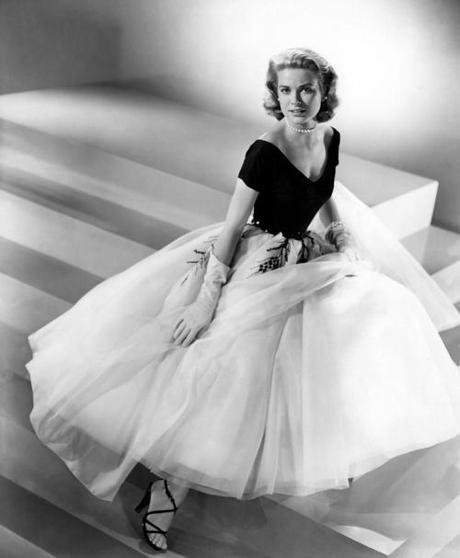
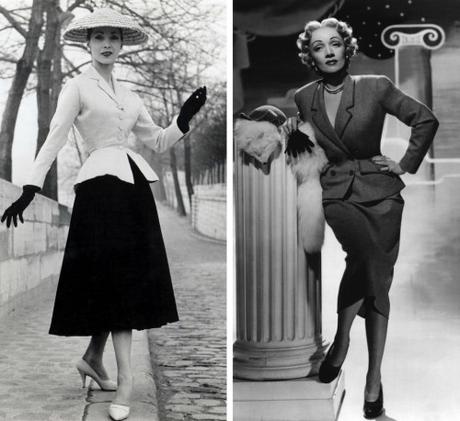
The coronavirus pandemic that has gripped the world is not, of course, comparable to the Second World War. And fashion plays a unique role in French society. But in the last few weeks, as I’ve read articles by fashion journalists who have been navel-gazing, soul searching, and prognosticating what will happen to this industry, I can’t help but think of the role that fashion — and even luxury fashion — plays in our lives. In popular discourse, fashion is frivolous, self-indulgent, and sometimes even sinful. Many in the press wonder if fashion will retreat from hype culture, and whether we’ll return to honestly made classics. Others wonder if we should be talking about this at all. It does seem crass to talk about clothes at this time, but clothing has also historically played an important role in lifting people’s spirits. More than just covering our bodies or signaling identity, fashion is about emotion.
Just two short years after the end of World War II, Christian Dior debuted his first collection, titled La Ligne Corolle, in his salon located on the Avenue Montaigne in Paris. The clothes were inspired by the circle of gentle petals on a flower. Indeed, when you turn a budding flower upside down, you can see the same silhouette. “I created flower women with gentle shoulders and generous bosoms, with tiny waists like stems, and skirts belling out like petals,” Dior later said. The silhouette, later known as The New Look, set a new trend in women’s fashion that lasted for fifteen years. In Dior’s words, it “became symbolic of youth and the future.” You can see the shift in the photos above, where wartime austerity put women in slimmer fitting clothes and shorter skirts, along with utilitarian attire such as workwear. Whereas the 1940s silhouette had strong, padded shoulders and a natural waistline, the 1950s frame was defined by its tiny shoulders, a cinched waist, and a full skirt to give an hourglass silhouette.
As fashion historian Valerie Steele wrote in her book Fifty Years of Fashion, “the longing for elegance and luxury had been suppressed for the years of the war, and The New Look promised to gratify it.” But when Dior’s collection was first introduced, critics lambasted him for ignoring the continued rationing measures and labeled him as unpatriotic. They argued that factories didn’t have enough material to make his lavishly designed, billowing skirts, and women didn’t have enough money to buy them. British Labour MP Bessie Braddock denounced the extravagance as the “ridiculous whim of idle people.” The French newspaper L'Humanité wrote with angry indignation: “Again, the capitalists are squandering resources while poor children go hungry.” In an October 1947 issue of Life Magazine, the editors published a photo spread of French housewives ripping a Dior dress off of a young woman. “Pipe this doll!” they reportedly shouted. “She pays 40,000 francs for dresses and our kids get no milk.” (Whether this story was staged by Dior as a clever marketing stunt is something left to historians).
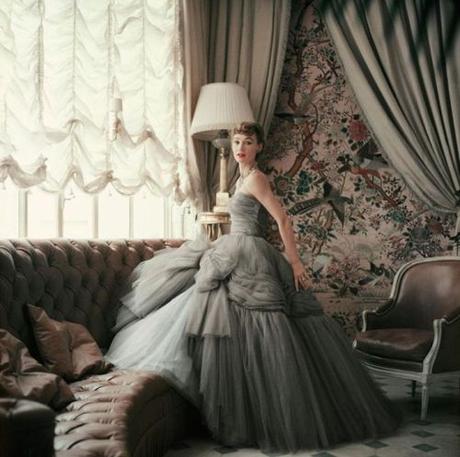
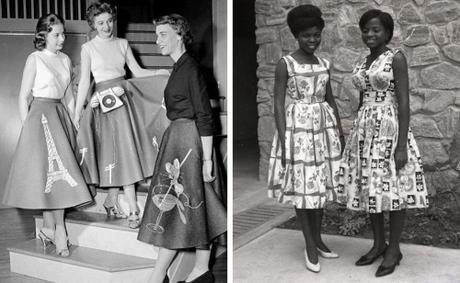
Dior defended his lavish dresses in lofty terms, framing them as an essential and almost humanizing element of daily life. “In a time as dark as our own, where luxury consists of guns and airplanes, our sense of luxury must be defended at all costs,” he said. “I believe that in it there’s something essential. Everything that goes beyond the simple fact of food, clothing, and shelter is luxury; the civilization we defend is luxury.” And while it’s true that only elites could afford Dior’s creations at first, the silhouette eventually spread the way all fashion gets democratized: through copying. Other designers imitated the look, in turn making it more affordable. Within just a few short years, The New Look silhouette became a dominant part of nearly every woman’s wardrobe. Women graduated in The New Look; they got married in The New Look. The New Look was sold in every store from Saks Fifth Avenue to Sears.
Far from being an indulgence that’s only meant for the wealthy, fashion often means the most to people who struggle to afford it. Growing up, friends of mine and I often looked to brands such as Ralph Lauren as aspirational markers of status — not necessarily white, upper-class status, but as markers within our own subcultures. In his 1937 book The Road to Wigan Pier, George Orwell explored the sociological conditions of working-class Brits in coal-mining communities, where he touches on this very issue:
The ordinary human being would sooner starve than live on brown bread and raw carrots. And the peculiar evil is this, that the less money you have, the less inclined you feel to spend it on wholesome food. A millionaire may enjoy breakfasting off orange juice and Ryvita biscuits; an unemployed man doesn’t. Here is the tendency of which I spoke at the end of the last chapter comes into play. When you are unemployed, which is to say when you are underfed, harassed, bored, and miserable, you don’t want to eat dull wholesome food. You want something a bit ‘tasty.’
This is not to say, of course, that people should be spending their money right now on fashion or luxurious goods. Or that fashion, at whatever price or scale, is vital. It’s only to say that one should allow themselves space to enjoy things, whether big or small. Fashion can be a temporary escape from our daily lives, as well as a way to uplift our spirits. Last month, as many Americans were adjusting to their new life under quarantine, New Yorker staff writer Rachel Syme started the hashtag #distancebutmakeitfahion on Twitter. “Please take something amazing out from the back of your closet that you never wear, prepare to put it on, and show it to the world on Sunday,” she tweeted. “I wanna see sequins; I wanna see pocket squares; I wanna see gowns. I won’t rest until I see at least one capelet or perhaps a jaunty silk scarf.”

Syme’s initial tweet has been liked more than 4,000 times, and the hashtag has been populated with countless photos. One woman wore a leopard-print dress with matching accessories for her birthday. Another looks like she’s about to go on a summer vacation in Spain. More than a few women have posted photos of exceptional outfits. This woman straight up made a bespoke romper; another looks like she’s dressed for the opera. “There will be a future in which we’ll be able to wear clothes like this again, and maybe we can be out on the street walking proudly admiring each other’s outfits in real life,” Syme told Insider. “Doing this on Sundays gives me hope for that future day.”
Sometimes, the best part of fashion isn’t about shopping or even dressing up. It’s about looking at photos and dreaming. A few weeks ago, I talked to Avery Trufelman, a podcast host and producer at 99% Invisible. She’s coming out with a new season of her award-winning fashion podcast Articles of Interest on May 12th. The opening episode is on the Théâtre de la Mode, a touring exhibit of fashion dolls that’s credited with reviving the French fashion industry after World War II. “The episode is about these dolls, the Théâtre de la Mode, that mysteriously ended up in Maryhill Museum, located in Washington state,” she tells me. “This is not even a small town museum; it’s a nowhere museum. If you look up photos of it, it’s perched on a cliff with nothing else around it. At some point, there’s this 26-year-old curator from the University of Ohio. She wanted to work in New York, but couldn’t find a job, so she winds up in this random Washingtonian museum, where she finds some creepy dolls in the basement. Long story short, she ends up discovering their historical significance and notifies people in Paris about how these dolls helped save the French couture industry.”
Trufelman continues: “She then gets flown to France with these dolls and her life totally changes. It’s like a classic makeover montage, where she’s traveling around the world and partying with all these designers and celebrities. Along the way, she finds out how much these dolls mean to post-war France. But she also learns how hard it is to sustain a glamorous lifestyle. She develops an eating disorder, she goes into debt, and her marriage breaks-up. It becomes very hard for her. At some point in the early ‘90s, she winds up at the Met Gala, where she sees a quote on the wall that says something like, 'glamour is whatever you can’t have.’ Here in lockdown, I’ve been thinking about this a lot. Weirdly, the idea of fashion and glamour can be more important than fashion and glamour itself. It can be more fun to look at someone who’s well-dressed than be someone who’s well-dressed. You have to position yourself as an outsider to this fantasy to understand that it’s silly but appreciate it anyway. And the whole world is on the outside of fashion right now.” Perhaps that’s why fashion still means a lot to us. At a time when we need a bit of escapism, it’s a way for us to dream.
